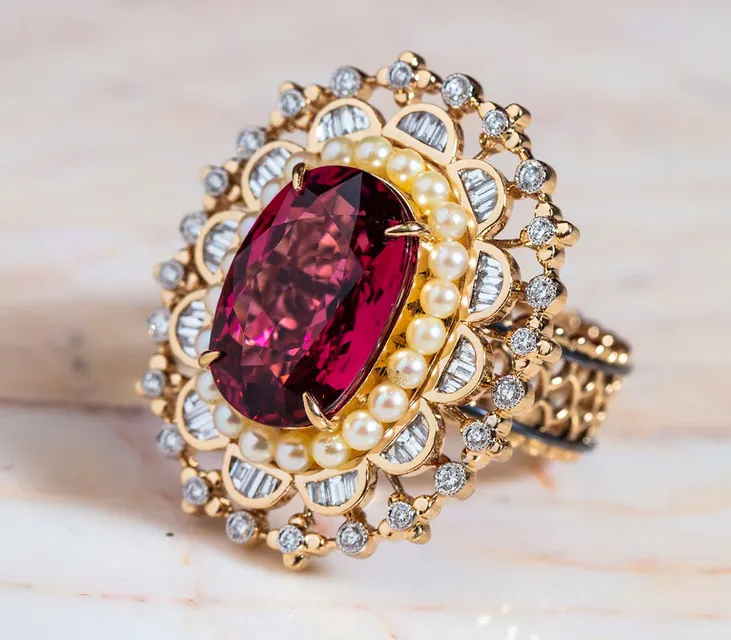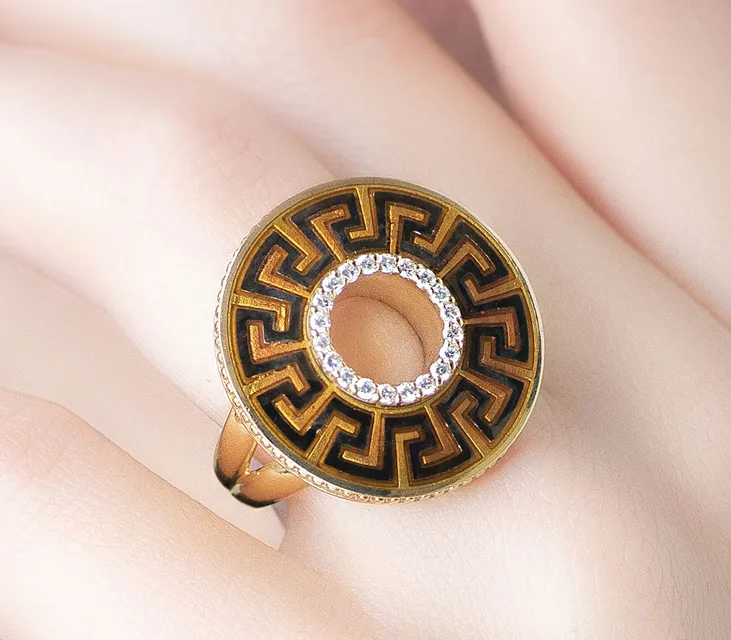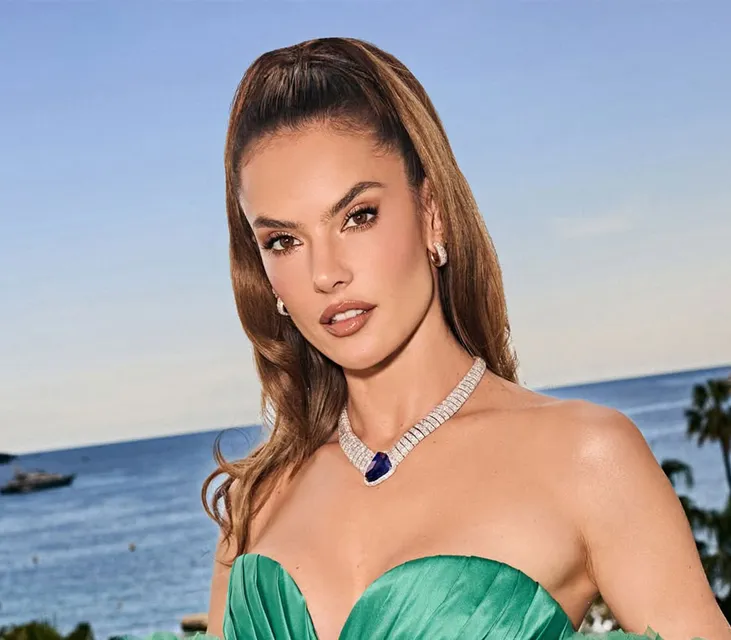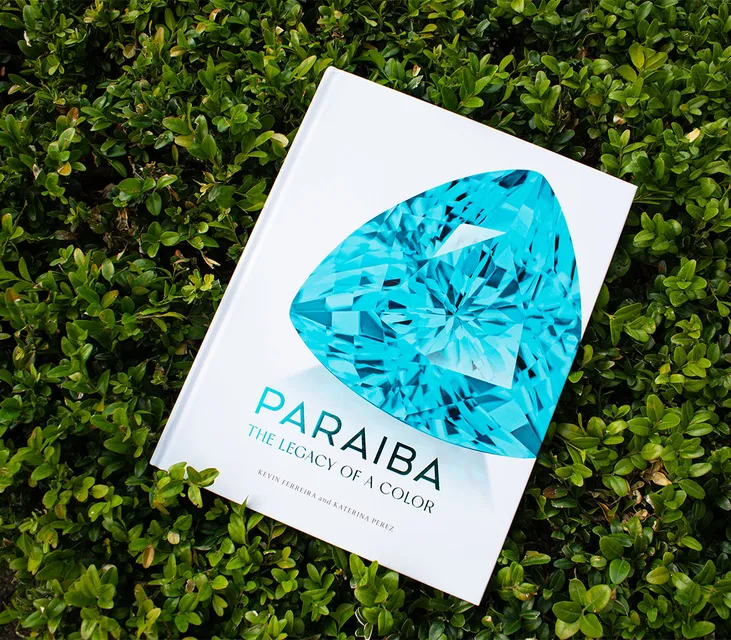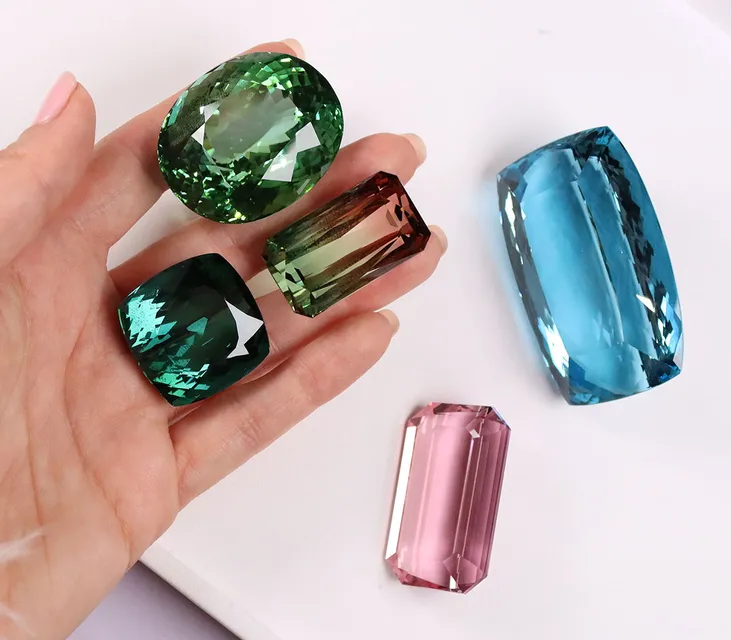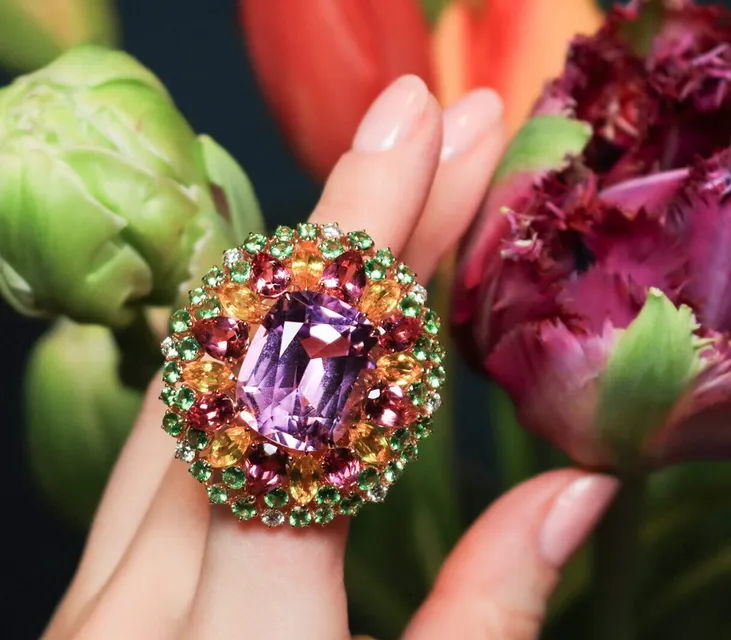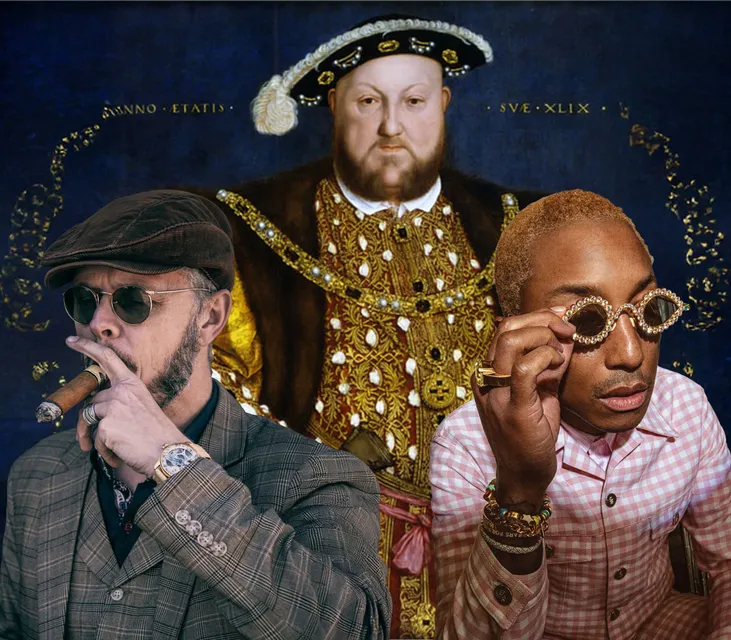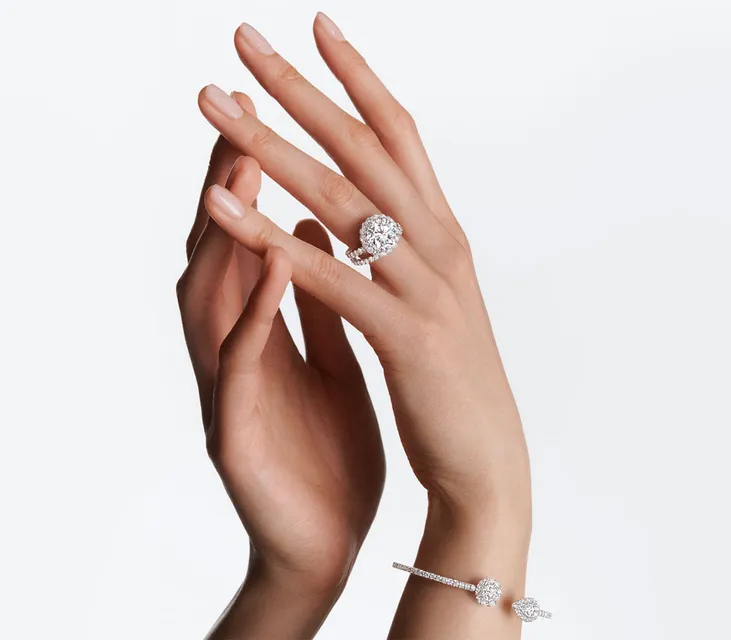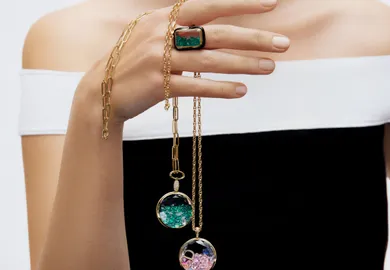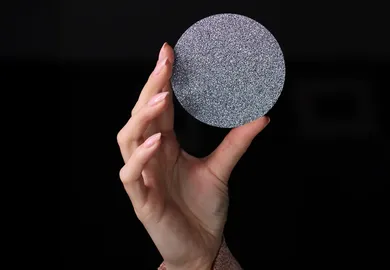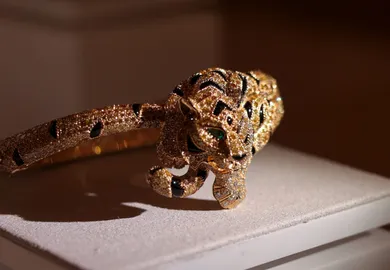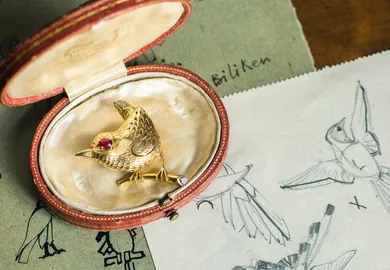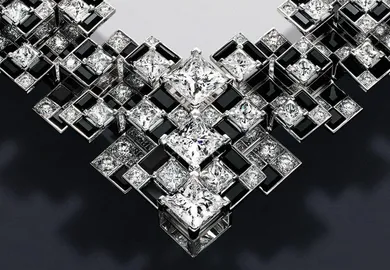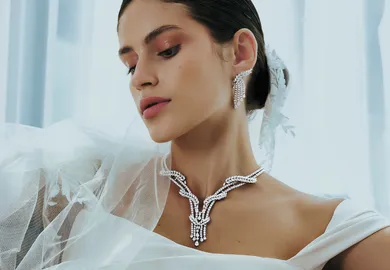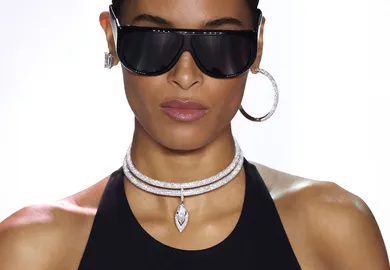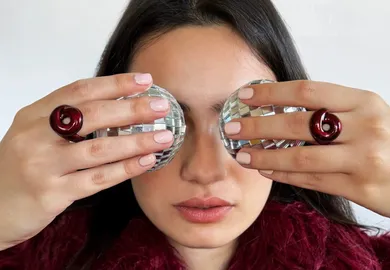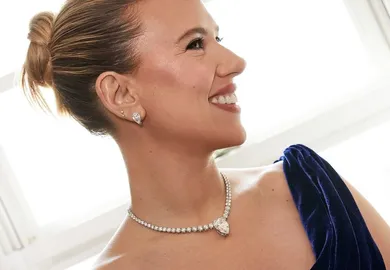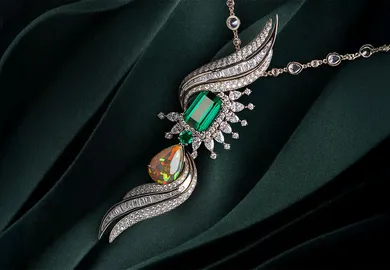

Shopping Christmas Colours on Jewel Street:
With the Christmas season fast approaching, it is time to think of gifts that we will buy get for our dearest ones. In the modern day and age, the easiest way to shop is online, and the easiest way to shop fine jewellery is by ‘e-hopping’ on to jewelstreet.com. This shopping platform features plenty of spectacular pieces created by the designers from across the globe. The best thing though is that these jewels can be shipped directly to your door.
While selecting the jewellery for this shopping guide, I particularly paid attention vibrant reds, rich greens and shiny golds – the colours we associate with Christmas. Have you ever wondered why these? The traditional reds and green have a long and rich history rooted in both paganism and Christianity.

Haider Ackermann with Madstone Design Melting Ice Necklace – £6,850
Exchanging greenery such as holly and ivy was a way to wish one another long life, peace and good luck. Rudolph’s red nose, Santa’s crimson suit and red amaryllis bring red colour into the season. Gold is symbolic of one of the gifts that the Magi (wise men) brought for infant Christ, as well as the star that led them from the East. In jewellery, gold is usually the colour of the precious metal that pieces like Anastazio’s pendant with a web of golden wires, or Hueb‘s textured Plisse ring are made of. However, gemstones have a touch of gold in them, too, especially citrine, golden topaz and heliodor.

Gaydamak Jewellery Ring and Cuff – £62,840 with Iris Van Herpen
When we mention red, the first thing that pops to our minds is undoubtedly the ruby.
This gem has become the key design element of the Baentely ring or David Gross necklace, both with diamonds. Little ‘H’ mixed rubies with pearls fill up the inside of an opened baroque pearl – this is a signature look of this designer’s jewellery. Arman Sucyan, a jeweller based in Turkey, used red corundums along with orange sapphires to encrust the surface of his silver drop earrings.

Maison Marginal and Colombian Emerald Ring by Botta Gioielli £56,870
And finally, the greens. They come in all sorts of shades – from light to dark, and pale to intense – with the most popular being the emerald green like on Olga Veisberg’s ring. This gorgeous colour can have yellow or blue undertones, depending on the region where emeralds are mined. Another sought-after green colour is that of tourmaline, and not one but two of them embellish Erica Courtney’s Double Trouble ring in yellow gold. Jewellery comes in such a variety of colours, so if you don’t want to limit yourself to just Christmas golds, reds and greens why not explore the whole rainbow of gemstones on jewelstreet.com?

WORDS
Katerina Perez is a jewellery insider, journalist and brand consultant with more than 15 years’ experience in the jewellery sector. Paris-based, Katerina has worked as a freelance journalist and content editor since 2011, writing articles for international publications. To share her jewellery knowledge and expertise, Katerina founded this website and launched her @katerina_perez Instagram in 2013.
Latest Stories
Add articles and images to your favourites. Just

Legacy of Love:The Dreamlike Jewels of Emirati Designer Mariyeh Ghelichkhani
During our meeting in Dubai, we spoke about the importance of family, the sweetness of finding joy through creativity, and the ability to translate dreamy visions and deep feelings into wearable pieces…
Jewels Katerina Perez Loves
Continue Reading
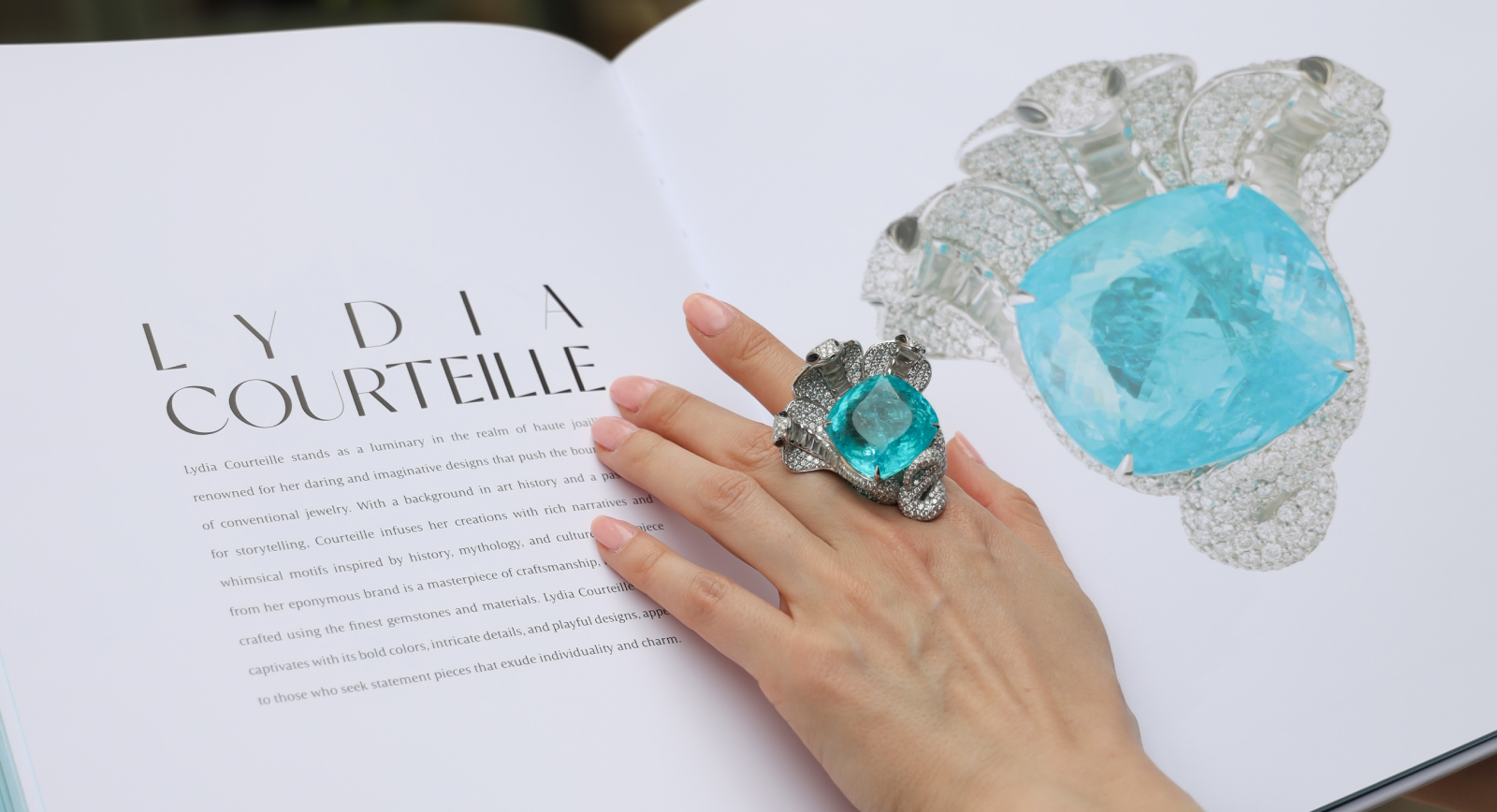
Writing Adventures:Co-Authoring the Book
Paraiba: The Legacy of a Color
Brand Focus: Cartier
Jewellery Insights straight to your inbox
















